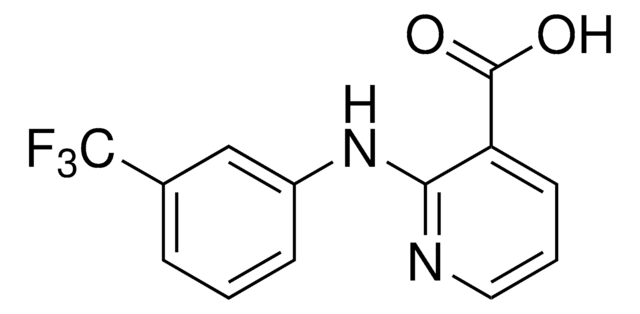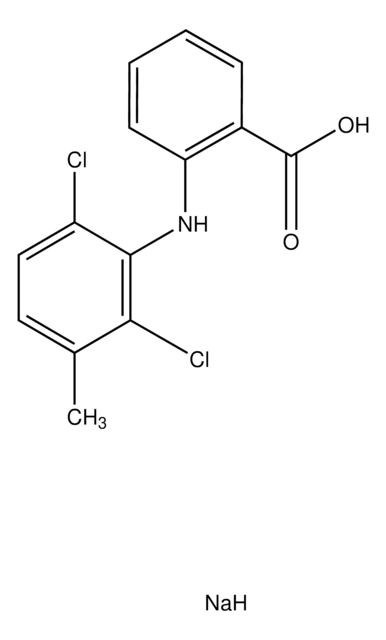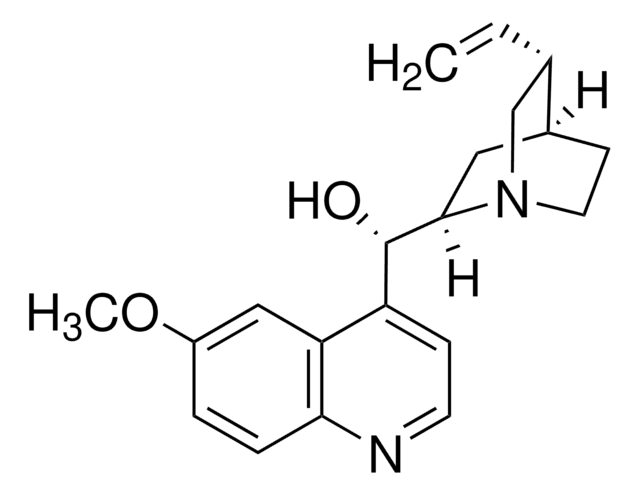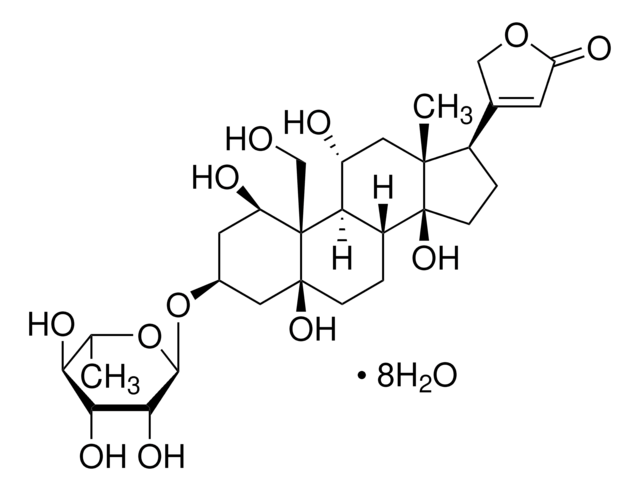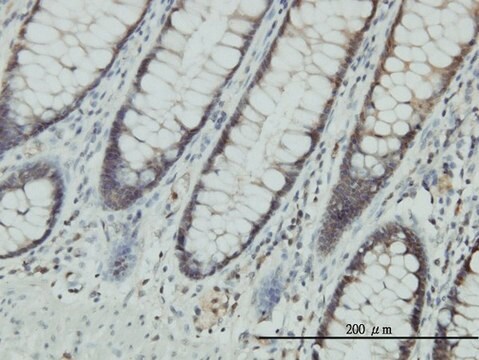N0630
Niflumic acid
Synonym(s):
2-(α,α,α-Trifluoro-m-toluidino)nicotinic acid, 2-[3-(Trifluoromethyl)anilino]nicotinic acid
About This Item
Recommended Products
biological source
synthetic (organic)
Assay
≥98% (HPLC)
form
powder
mp
203-204 °C
solubility
acetone: 50 mg/mL, clear to slightly hazy, yellow
SMILES string
O=C(O)C1=CC=CN=C1NC2=CC(C(F)(F)F)=CC=C2
InChI
1S/C13H9F3N2O2/c14-13(15,16)8-3-1-4-9(7-8)18-11-10(12(19)20)5-2-6-17-11/h1-7H,(H,17,18)(H,19,20)
InChI key
JZFPYUNJRRFVQU-UHFFFAOYSA-N
Gene Information
human ... PTGS1(5742)
Looking for similar products? Visit Product Comparison Guide
Application
- as a chloride channel blocker in mouse olfactory epithelium for odor-induced electroolfactograms (EOGs) measurements, to test its analgesic effect on rat dorsal root ganglion neurons post γ-aminobutyric acid induction
- as a calcium-activated chloride channel (CaCC) inhibitor in C2C12 myoblasts and also to test its effect on volume-regulated anion channel (VRAC)
- as an inhibitor of voltage-dependent potassium channel in human embryonic kidney (HEK 293) phoenix cells
Biochem/physiol Actions
Features and Benefits
Signal Word
Danger
Hazard Statements
Precautionary Statements
Hazard Classifications
Acute Tox. 3 Oral - Aquatic Chronic 4
Storage Class Code
6.1C - Combustible acute toxic Cat.3 / toxic compounds or compounds which causing chronic effects
WGK
WGK 3
Personal Protective Equipment
Choose from one of the most recent versions:
Already Own This Product?
Find documentation for the products that you have recently purchased in the Document Library.
Customers Also Viewed
Our team of scientists has experience in all areas of research including Life Science, Material Science, Chemical Synthesis, Chromatography, Analytical and many others.
Contact Technical Service